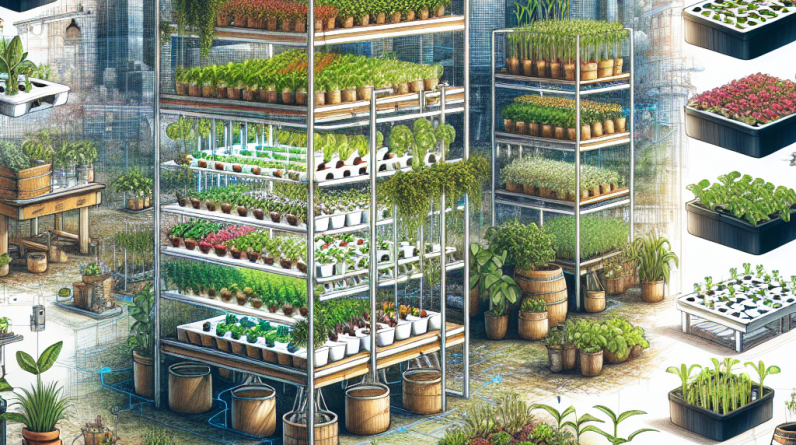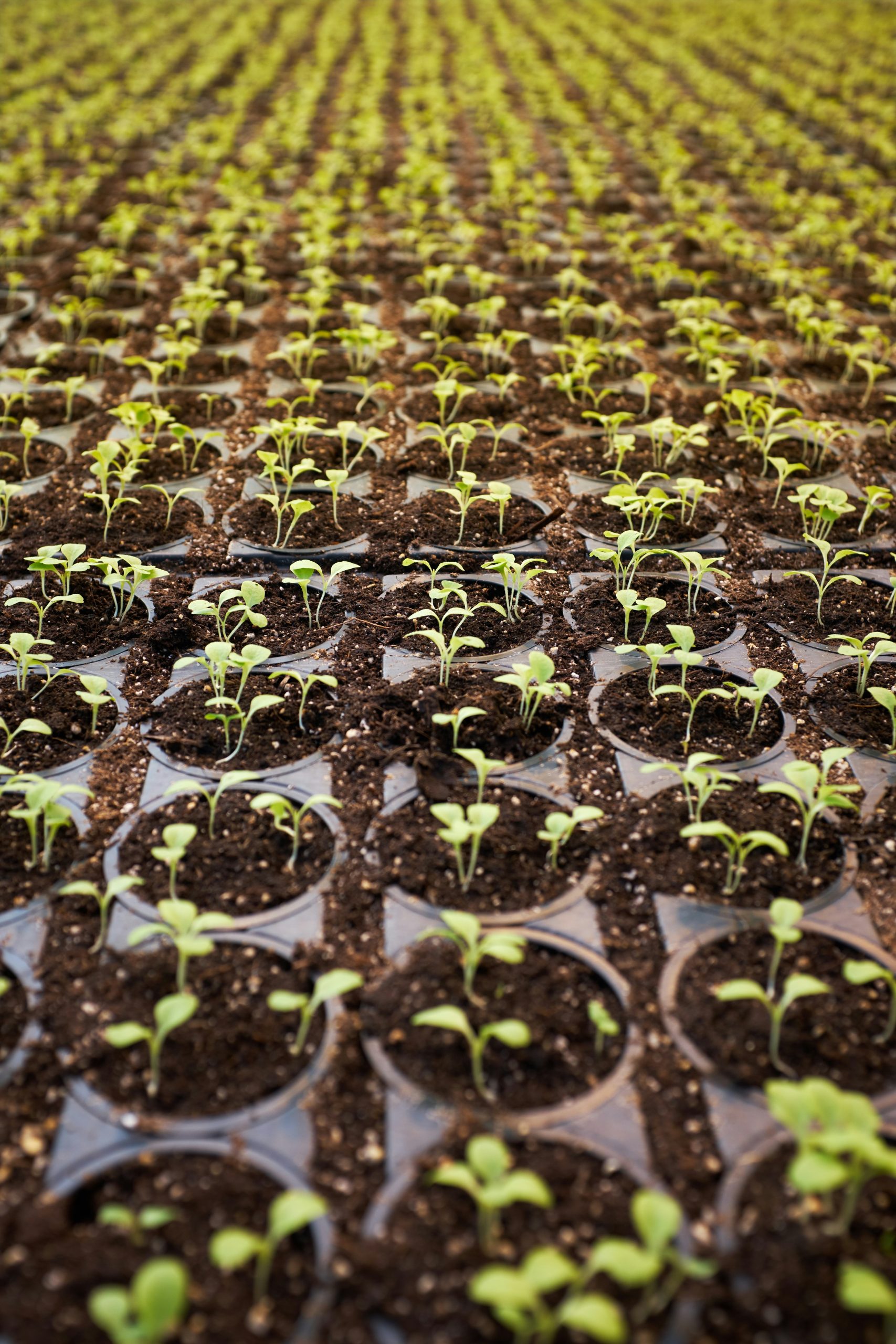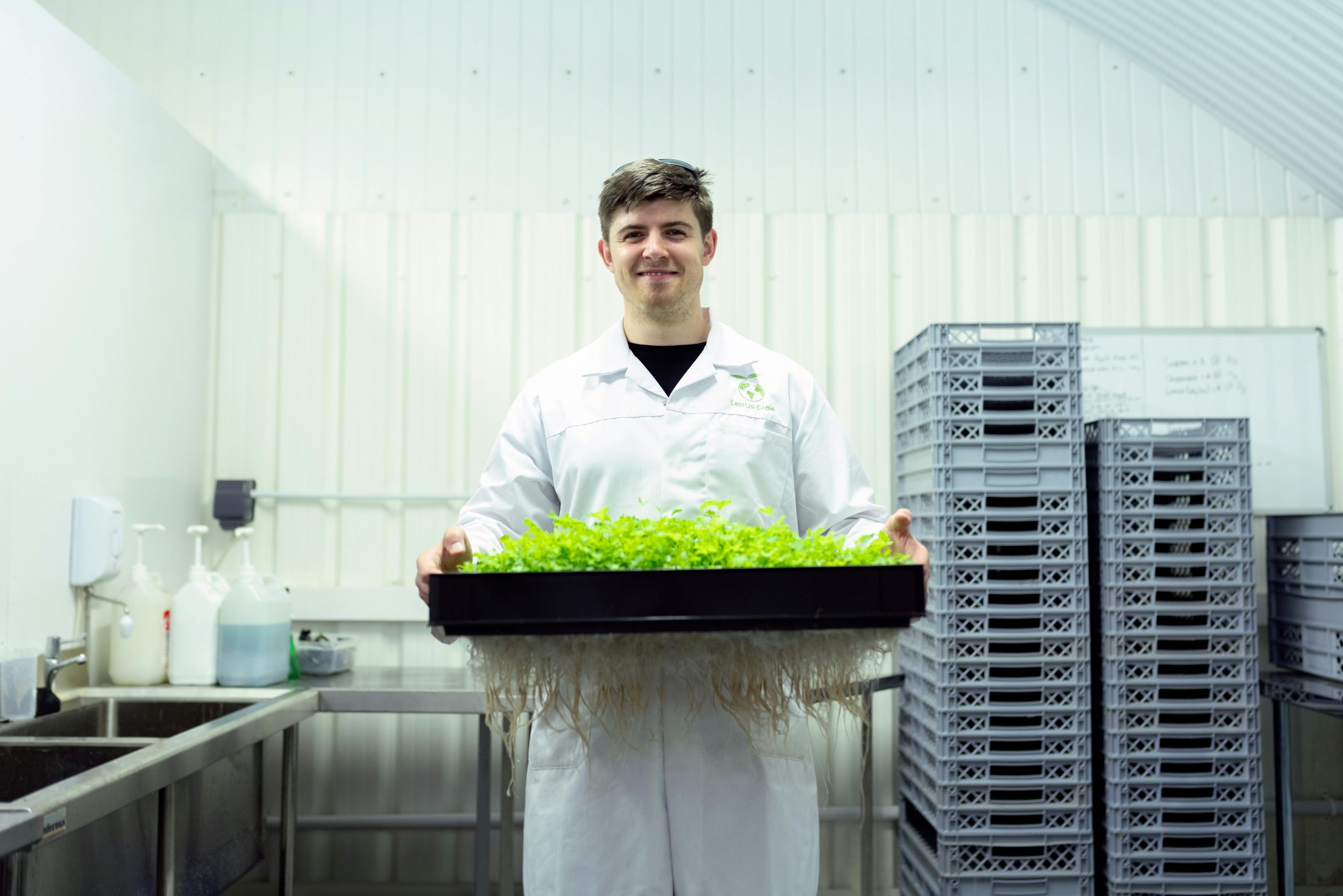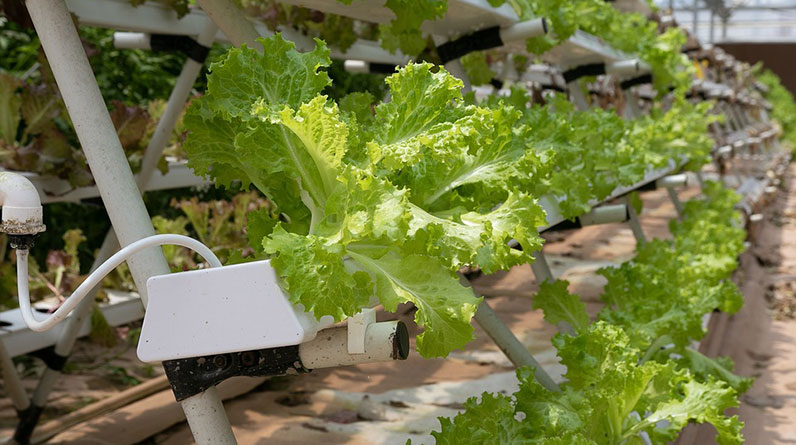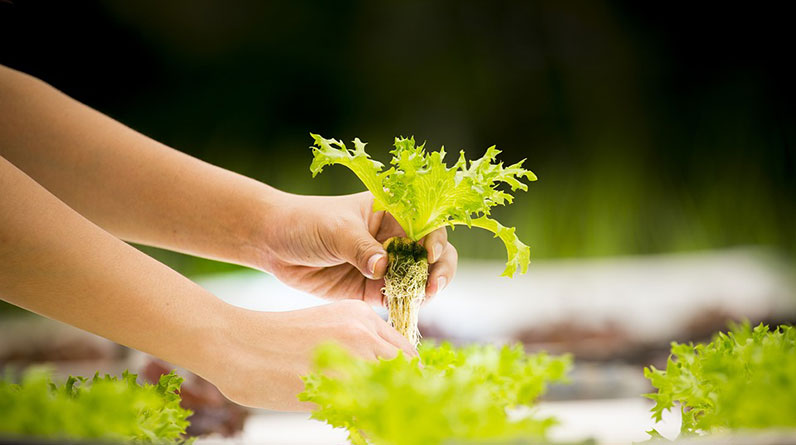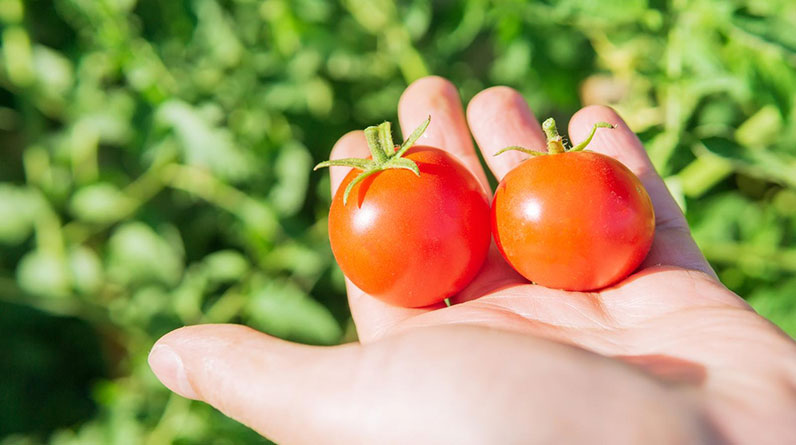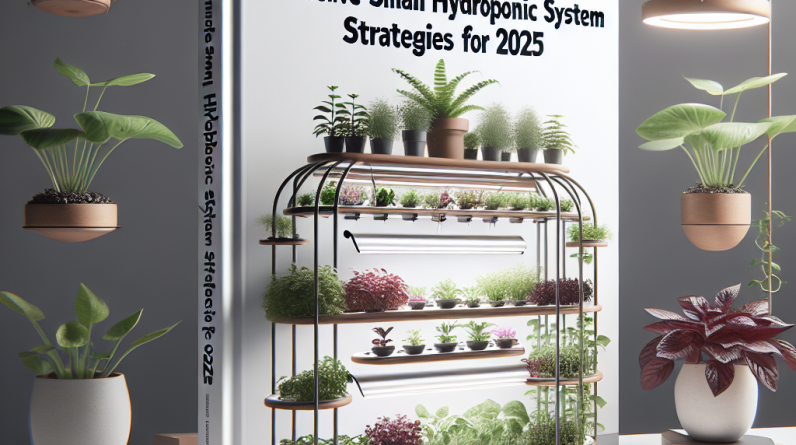
- 1. Optimize Lighting Conditions
- 2. Choose the Right Growing Medium
- 3. Implement Automation and Monitoring
- 4. Select Suitable Crops for Small Systems
- 5. Maximize Space with Vertical Farming
- 6. Use Renewable Energy Solutions
- 7. Maintain Water Quality and pH Balance
- 8. Incorporate Nutrient Recycling
- 9. Design for Easy Maintenance and Scalability
- 10. Stay Updated with 2025 Hydroponic Trends
1. Optimize Lighting Conditions
The Role of Light in Small Hydroponic Systems
Lighting is one of the most critical factors for the success of any small hydroponic system. In 2025, advancements in LED technology have made it easier and more affordable to simulate natural sunlight, providing plants with the spectrum and intensity they need. Proper lighting ensures healthy growth, increased yields, and faster crop cycles.
Investing in adjustable grow lights allows growers to tailor light exposure based on plant species and growth stage. For example, leafy greens prefer around 12-16 hours of light daily, while flowering plants may need different light cycles. Ensuring consistent and optimal lighting minimizes stress and maximizes productivity.
For small hydroponic systems, especially indoor setups, positioning lights at the right distance and spectrum is vital. Using full-spectrum LEDs can mimic natural conditions, leading to more vibrant, nutrient-rich plants. In 2025, smart lighting systems that automate light cycles are becoming popular, enhancing efficiency and reducing energy costs.
Practical Tips for Lighting Optimization
- Choose energy-efficient LED grow lights tailored to your cropâs needs.
- Set timers for consistent light cycles to promote healthy growth.
- Regularly check and adjust light distance to prevent plant stress.
2. Choose the Right Growing Medium
Why the Growing Medium Matters
The choice of growing medium profoundly influences nutrient delivery, root stability, and overall plant health in a small hydroponic system. Unlike soil-based gardening, hydroponic systems rely on inert mediums like coconut coir, clay pellets, or Rockwool to support roots and facilitate water and nutrient flow.
In 2025, new biodegradable and sustainable mediums are gaining popularity for environmentally conscious growers. These mediums improve aeration and moisture retention, leading to healthier roots and increased yields. Selecting the right medium depends on plant type, system design, and personal preferences.
For example, clay pellets are reusable and provide excellent drainage, making them ideal for small NFT or flood-and-drain systems. Coconut coir retains moisture well, suitable for vertical or compact setups. Experimenting with different mediums can optimize your small hydroponic systemâs performance.
Practical Considerations for Medium Selection
- Ensure the medium is inert, pH neutral, and contaminant-free.
- Match the mediumâs properties with the cropâs water and oxygen needs.
- Consider sustainability and reusability for eco-friendly gardening.
3. Implement Automation and Monitoring
Why Automation is Key in 2025
Automation is transforming small hydroponic systems by enabling precise control over environmental conditions. In 2025, smart sensors, controllers, and IoT devices make it easier for growers to monitor water temperature, pH levels, humidity, and light intensity in real-time. This reduces manual labor and minimizes human error.
Automated systems can adjust nutrient dosages, regulate water flow, and optimize lighting schedules automatically. As a result, plants experience consistent conditions, leading to better growth rates and higher yields. Automation is especially beneficial for small-scale operations where growers may lack extensive experience.
Many innovative startups now offer all-in-one hydroponic management kits that integrate sensors and apps. These tools provide actionable insights and alerts, ensuring your small hydroponic system stays in optimal condition entirely hands-free.
Tips for Effective System Automation
- Invest in reliable sensors compatible with your small hydroponic system.
- Use automation platforms that offer user-friendly interfaces and remote access.
- Regularly calibrate sensors to maintain accuracy.
4. Select Suitable Crops for Small Systems
Best Crops for Compact Hydroponic Setups
Not all plants thrive equally in small hydroponic systems. In 2025, popular crops for small setups include leafy greens like lettuce and spinach, herbs such as basil and cilantro, and even strawberries. These plants grow quickly, require less space, and have high market value.
Choosing crops that are well-suited for small systems ensures quicker turnaround times and better resource efficiency. For instance, basil and mint can be harvested multiple times, making them ideal for continuous production in limited space. Research shows that small hydroponic setups can produce up to 4-6 harvests per year when properly managed.
Additionally, crop selection should consider local market demand and personal preference. Starting with easy-to-grow plants reduces frustration and helps build confidence as you scale your small hydroponic system.
Crop Planning for Maximum Yield
- Rotate crops to prevent pest buildup and nutrient depletion.
- Use spacers and trellises to maximize vertical space for vining plants.
- Plan harvest cycles for staggered planting and continuous production.
5. Maximize Space with Vertical Farming
Vertical Systems for Small Hydroponics
Vertical farming is a game-changer for small hydroponic systems, especially in limited spaces. By stacking layers of plants, you maximize yield per square foot. In 2025, modular vertical hydroponic units are affordable and easy to assemble, making them accessible to home growers and small businesses alike.
Vertical setups such as tower systems or wall-mounted racks allow for efficient use of natural or artificial light. This approach not only increases productivity but also reduces resource waste by focusing growth in a small footprint. Additionally, vertical systems facilitate better air circulation and easier access for maintenance.
Examples include hydroponic towers that hold multiple trays or vertical aeroponics units that deliver nutrients through mist. When integrated with automation, vertical hydroponic systems can be highly productive and energy-efficient.
Design Tips for Vertical Hydroponic Systems
- Use lightweight, durable materials for ease of assembly and maintenance.
- Ensure uniform light distribution across all layers.
- Incorporate easy-access doors or platforms for harvesting and cleaning.
6. Use Renewable Energy Solutions
Sustainable Power Options for Small Systems
In 2025, integrating renewable energy sources like solar panels or small wind turbines with your small hydroponic system is more practical and affordable than ever. Sustainable energy reduces operational costs and minimizes environmental impact, aligning with eco-conscious goals.
Solar-powered systems can run LED grow lights, water pumps, and sensors efficiently. Many portable solar kits are available that can be tailored to your specific system size and energy needs. This setup is ideal for off-grid situations or urban environments with high electricity costs.
Implementing renewable energy also qualifies your small hydroponic system for eco-labels and potential subsidies, further enhancing your sustainability profile and market appeal.
Tips for Going Green with Energy
- Calculate your power needs to select appropriate renewable solutions.
- Combine solar with battery storage for continuous operation during cloudy days.
- Regularly monitor energy consumption and efficiency.
7. Maintain Water Quality and pH Balance
Why Water Management Matters
Keeping water quality at its best is vital for a successful small hydroponic system. In 2025, using smart testing kits, growers can monitor pH, EC (electrical conductivity), and nutrient levels with ease. Proper water management ensures plants absorb nutrients efficiently, reducing waste and preventing disease.
Maintaining a stable pH between 5.5 and 6.5 is recommended for most crops. Regular adjustments using pH buffers or natural solutions help keep conditions optimal. Healthy water fosters vigorous root development and boosts yield quality.
Research indicates that consistent water quality management can increase crop productivity by 15-20%, making it a critical step in your small hydroponic system strategy.
Best Practices for Water Maintenance
- Test water parameters at least twice a week and after every change.
- Use high-quality water source and filters to reduce contaminants.
- Implement recirculation and filtration systems to prevent buildup of waste and pathogens.
8. Incorporate Nutrient Recycling
Sustainable Nutrient Management
In 2025, nutrient recycling is a key component of sustainable small hydroponic systems. Instead of constantly purchasing new nutrients, smart growers re-use runoff water or compost organic waste to replenish essential minerals. This approach reduces costs and environmental impact.
Recirculating nutrients ensure that your plants continue to receive what they need without wastage. Proper filtration and monitoring systems support efficient nutrient reuse and prevent imbalances that could harm your crops.
Moreover, organic nutrient sources like fish emulsion or compost teas are increasingly popular among small-scale hydroponic growers for their sustainability and health benefits.
Actionable Tips for Nutrient Recycling
- Install a filtration system to remove debris and pathogens from runoff water.
- Regularly test nutrient concentrations and adjust accordingly.
- Use organic amendments whenever possible to promote eco-friendliness.
9. Design for Easy Maintenance and Scalability
Creating User-Friendly Small Hydroponic Systems
Efficiency in setup and maintenance is crucial for small hydroponic systems in 2025. Designing modular units that are easy to access, clean, and expand upon saves time and effort. Using standardized parts and clear instructions simplifies troubleshooting and upgrades.
Consider aspects like removable trays, accessible reservoirs, and integrated wiring to streamline daily operations. Scalability is achieved by adding modules or stacking units, allowing your system to grow as your needs increase.
Several companies now offer customizable solutions that fit small spaces but are adaptable for future expansion, making your investment more versatile and sustainable in the long run.
Practical Design Tips
- Plan your system layout to minimize maintenance effort.
- Use high-quality, durable materials resistant to water and nutrient exposure.
- Design with scalability in mindâleave space for additional modules or plant layers.
10. Stay Updated with 2025 Hydroponic Trends
Continuous Learning for Success
The hydroponic industry is evolving rapidly, with innovations in technology, crop varieties, and sustainability practices. In 2025, staying informed through industry publications, webinars, and networking is vital for maintaining a competitive edge and optimizing your small hydroponic system.
Attending expos and webinars helps you discover the latest equipment, techniques, and research findings that can be directly applied to your setup. Joining online communities also provides valuable peer-to-peer support and experience sharing.
Adapting to new developments ensures your small hydroponic system remains efficient, profitable, and environmentally friendly well into the future.
Action Steps to Stay Ahead
- Subscribe to industry newsletters and journals.
- Participate in forums and local grower groups.
- Test new technologies on a small scale before full implementation.
Conclusion
In 2025, a small hydroponic system can be a highly productive, sustainable, and enjoyable way to grow fresh produce at home or on a small commercial scale. By implementing these 10 effective strategiesâranging from optimizing lighting and choosing the right medium, to automation, crop selection, and staying updatedâyou set yourself up for success and environmental responsibility. Remember, the key to thriving with a small hydroponic system is continual learning, adaptation, and attention to detail. Embrace this innovative method, and youâll reap the benefits of healthy, abundant crops all year round.
Frequently Asked Questions (FAQs)
- What is a small hydroponic system?
- A small hydroponic system is a compact, soil-less growing setup designed for limited space, allowing efficient cultivation of plants using water-based nutrient solutions.
- How can I optimize my small hydroponic system for better yields?
- Focus on proper lighting, water quality, crop selection, automation, and space management. Regular monitoring and maintenance are essential.
- Is a small hydroponic system suitable for beginners?
- Yes, many small hydroponic systems are beginner-friendly, especially with automation and clear instructions. Start with easy crops like lettuce or herbs.
- What are the benefits of using a small hydroponic system in 2025?
- Benefits include faster growth, higher yields, indoor cultivation regardless of climate, and environmental sustainability through efficient water and nutrient use.
- Where can I learn more about small hydroponic systems?
- Consult industry websites, online courses, and local gardening groups. Stay updated with the latest trends through webinars and publications.
Related Content
- The Ultimate 2025 Guide to Indoor Hydroponic Growing: Top 10 Effective Strategies
- The Ultimate Guide to aeroponic vs hydroponic (2025): 7 Effective Strategies to Grow Faster
- What are the Benefits of Growing Tomatoes in a Hydroponic Garden?
- How to Use Sensors to Optimize Hydroponic Farming
- The Ultimate Guide to Deep Water Culture Hydroponics in 2025: 10 Effective Strategies to Boost Your Harvest



